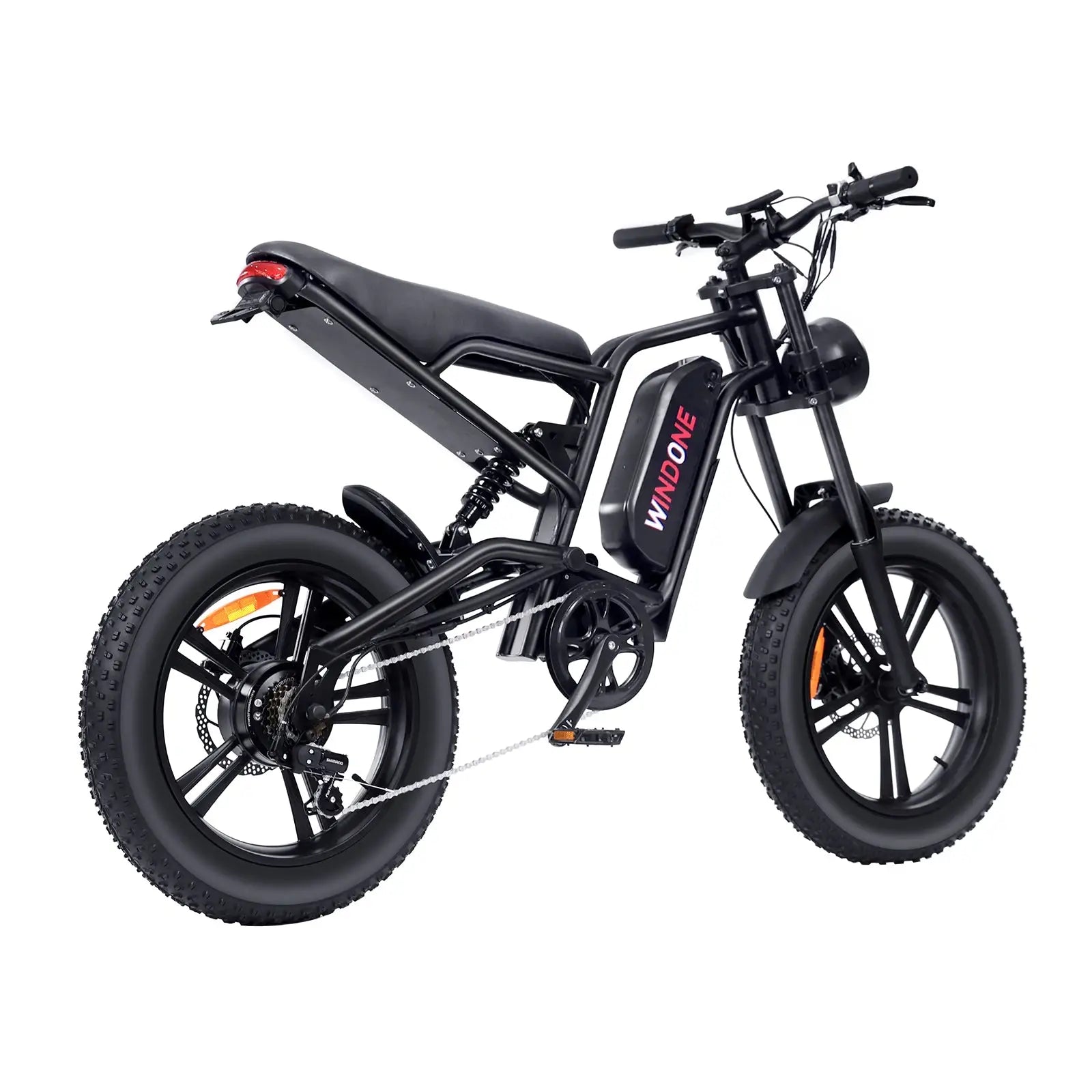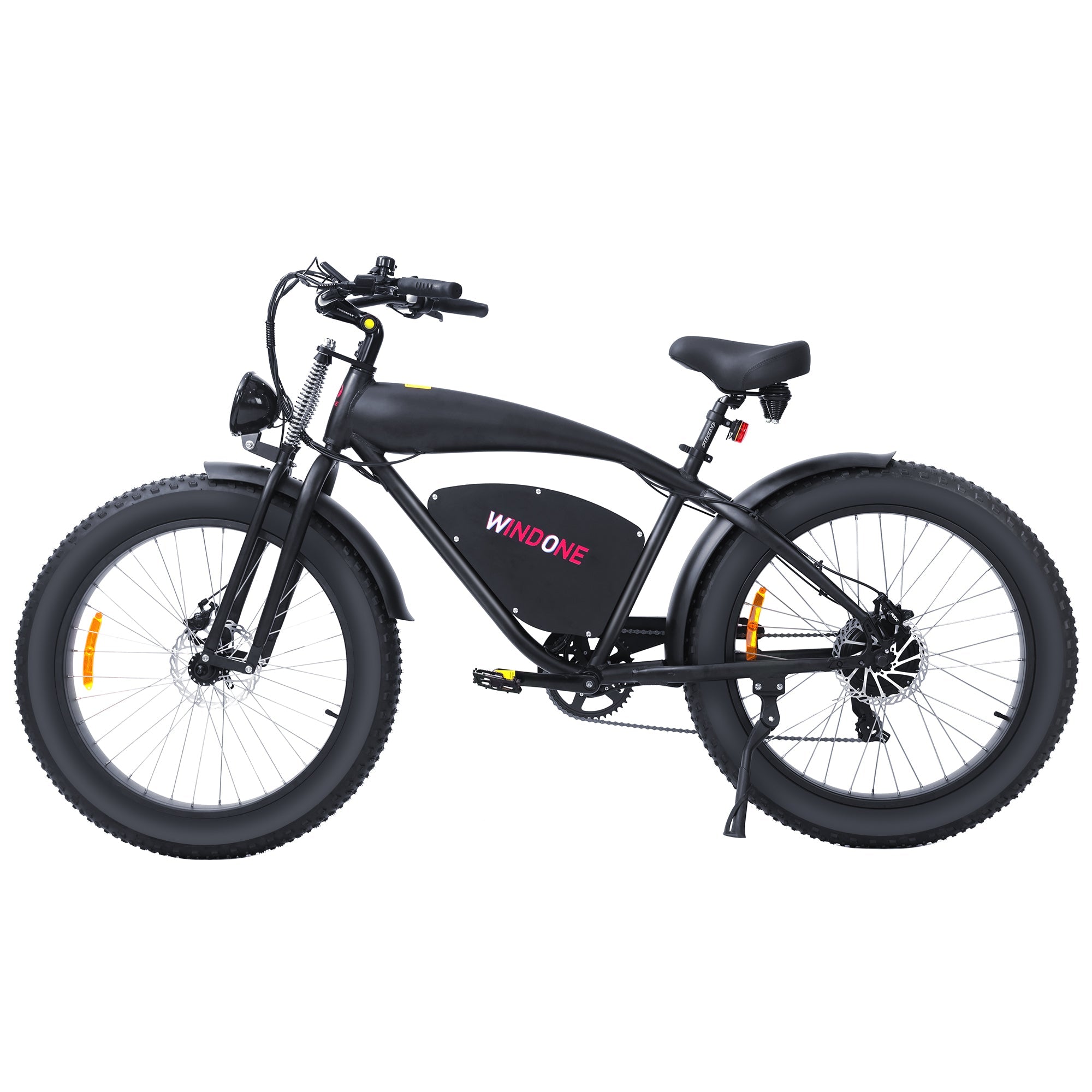FAQ
An off-road electric bike, often referred to as an e-MTB (electric mountain bike), is a bicycle equipped with an integrated electric motor designed to assist with pedaling, specifically built to handle the rigors of unpaved surfaces. These bikes are engineered for a variety of challenging terrains, including dirt roads, gravel paths, steep inclines, and technical singletrack trails. Key features typically include:
Robust Frames: Built for durability and to withstand impacts.
Knobby, Wider Tires: Offering increased traction and stability on loose or uneven ground.
Suspension Systems: Front and often full (front and rear) suspension to absorb shocks and improve control.
Powerful Motors and Durable Batteries: Providing the necessary torque and range for demanding rides.
Hydraulic Disc Brakes: Ensuring reliable stopping power in various conditions.
Off-road e-bikes offer a multitude of advantages for trail riders:
Conquer Challenging Terrain with Ease: The electric assist helps you tackle steep climbs and technical sections that might be exhausting or impossible on a traditional mountain bike.
Ride Farther and Explore More: The motor allows you to cover greater distances and explore new trails without fatiguing as quickly.
Enhanced Enjoyment: Spend more time enjoying the descents and technical aspects of riding, as ascents become less of a barrier.
Increased Accessibility: Makes off-road riding more accessible to individuals with varying fitness levels or physical limitations.
Improved Traction and Stability: Wider tires and advanced suspension systems contribute to better grip and control on rough surfaces.
Ride More Frequently: The assistance can reduce the physical toll of rides, allowing for more frequent outings.
Keep Up with Faster Riders: Enables riders of different abilities to enjoy group rides together.
Off-road electric bikes and standard commuter e-bikes, while both offering electric pedal assistance, are designed with distinct purposes and features tailored to very different environments. Off-road e-bikes are engineered primarily for performance and durability on unpaved, challenging terrains. They typically feature more robust and rugged frame designs to withstand impacts. To ensure superior traction and stability on surfaces like dirt, gravel, and uneven trails, off-road e-bikes are equipped with wider, knobbier tires. Suspension is a key characteristic, with most having at least front suspension, and many advanced models offering full suspension (both front and rear) to absorb shocks, enhancing control and rider comfort. Their motors are often tuned for higher torque to assist riders in conquering steep inclines and technical sections. The gearing on off-road e-bikes usually offers a wider range to tackle varied gradients. Overall, their design prioritizes sport and adventure, often with a more minimalist approach to accessories, focusing on performance.
In contrast, standard commuter e-bikes are built for everyday travel in urban settings. Their frame design generally prioritizes rider comfort and efficiency, often with a more upright riding posture. Since commuter e-bikes are intended for paved roads and bike paths, they typically have narrower, smoother tires designed to reduce rolling resistance and maximize battery range. In terms of suspension, commuter e-bikes might have no suspension or only basic front suspension to handle minor imperfections on city streets. The power output and torque from their motors are generally geared towards smooth acceleration and assistance on urban roads and moderate hills, rather than extreme climbing. The gearing is also optimized for typical city riding speeds. Furthermore, commuter e-bikes often come equipped with, or are designed for easy installation of, practical accessories such as fenders, racks, and integrated lights to enhance their utility for daily commuting.
In essence, the fundamental difference lies in their intended application: off-road e-bikes are built for handling, capability, and resilience on difficult trails, whereas standard commuter e-bikes focus on comfort, practicality, and efficiency for urban navigation.
Yes, off-road electric bikes, particularly those with fat tires, can be quite suitable for riding in winter and snowy conditions. Here's why and what to consider:
Improved Traction: The wider, knobby tires found on many off-road e-bikes (especially fat bikes with tire widths of 4 inches or more) provide significantly better grip and floatation on snow compared to standard commuter tires.
Electric Assist: The motor can help you power through packed snow or slush, making winter riding less strenuous.
However, there are important considerations:
Battery Performance: Cold temperatures can significantly reduce battery range and overall performance. It's advisable to store the battery indoors in a warmer environment and expect shorter ride times.
Icy Conditions: While wider tires help on snow, ice can still be treacherous. Studded tires may be necessary for riding on icy surfaces.
Bike Maintenance: Winter conditions (snow, salt, moisture) can be harsh on bike components. Regular cleaning and lubrication are crucial. Pay special attention to the drivetrain and braking surfaces.
Riding Technique: Riding in snow requires a smoother, more cautious approach. Avoid sudden turns or braking.
Waterproofing: Ensure the bike's electrical components have a good level of water resistance.
Visibility: Shorter daylight hours and potentially reduced visibility in snowy conditions mean good lights are essential.
While not all off-road e-bikes are specifically designed as "snow bikes," many offer features that make them capable and enjoyable for winter adventures with the proper precautions and potential modifications like studded tires.



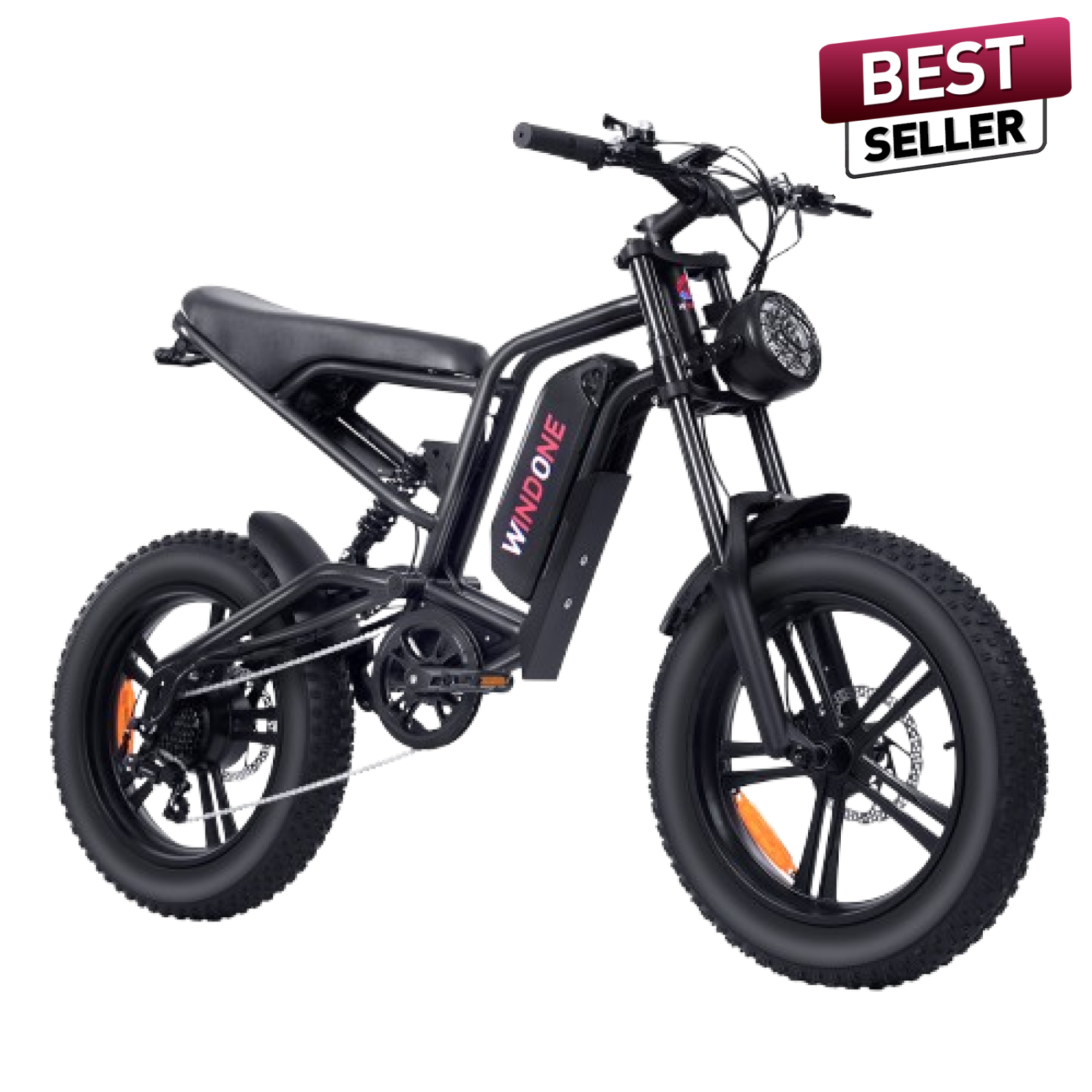
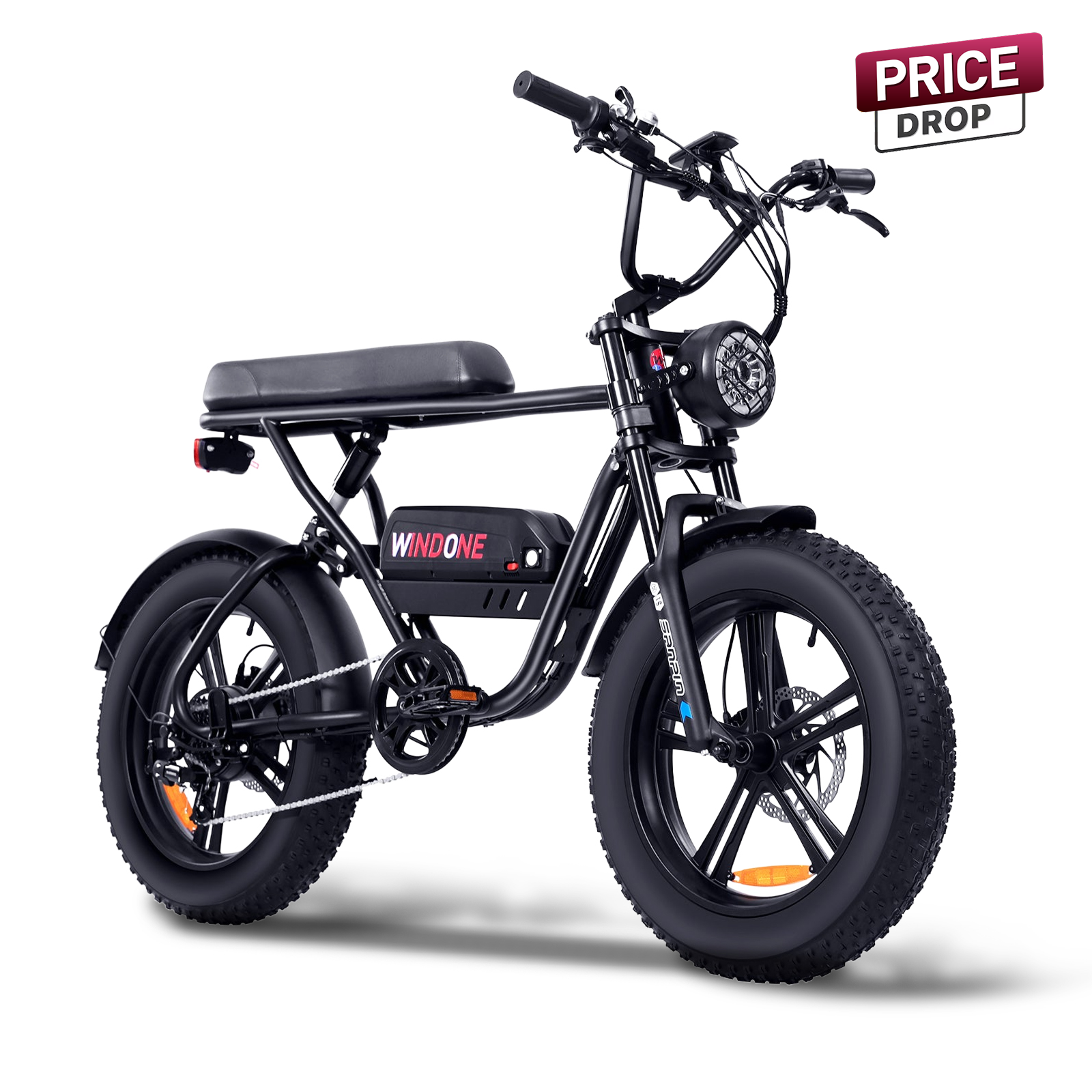
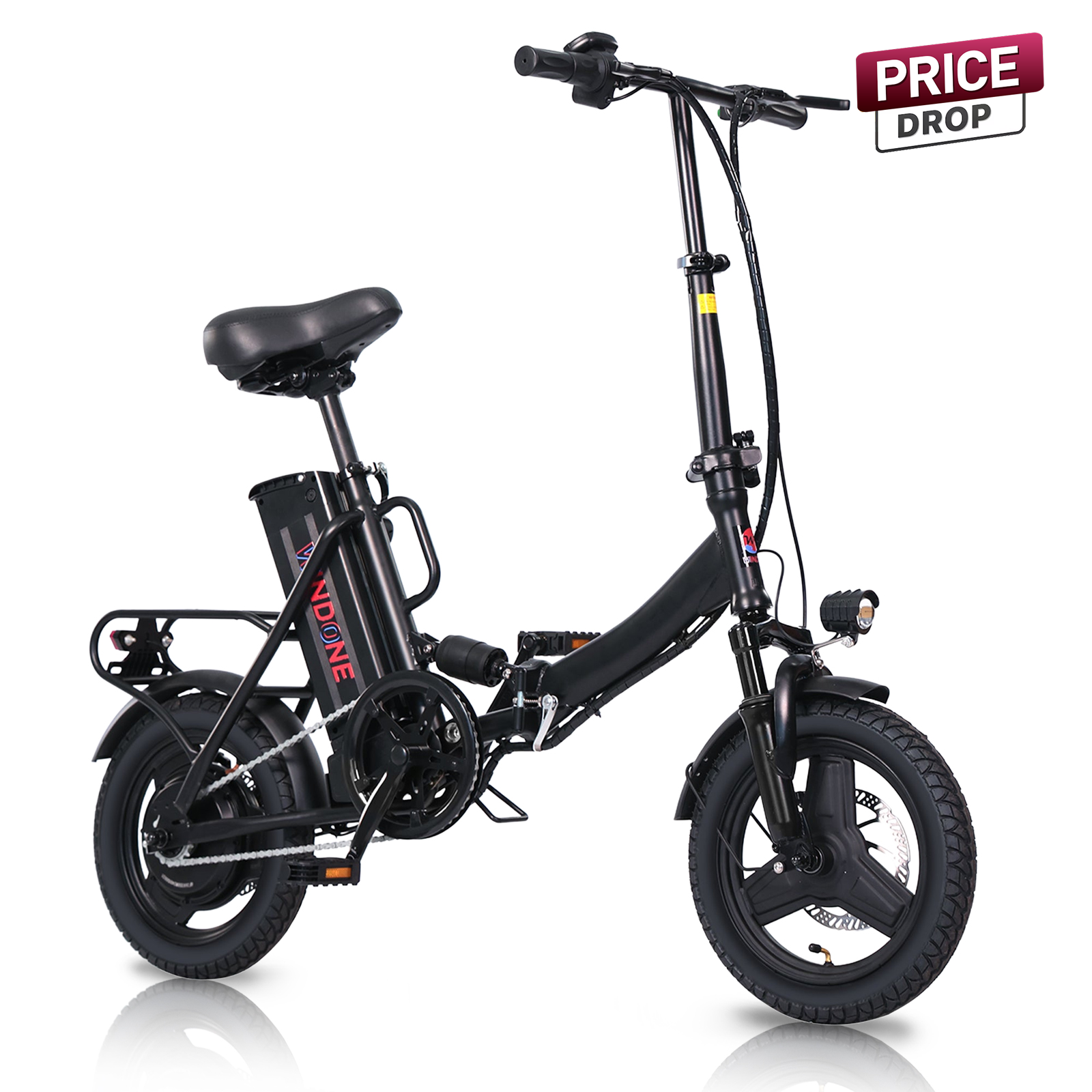
 Payment
Payment Sezzle Financing
Sezzle Financing Warranty
Warranty Shipping Policy
Shipping Policy Track Your Order
Track Your Order Return & Refund
Return & Refund User Manual
User Manual Contact Us
Contact Us FAQs
FAQs




